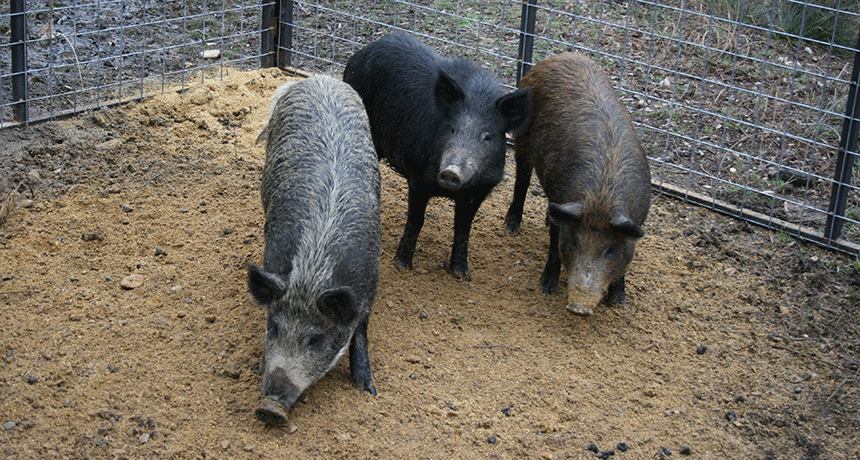Questions for ‘Can anything stop the big pig invasion?’

Feral pigs roam in most U.S. states. New traps may help control the size of their populations.
USDA APHIS photo by Clint Turnage/Flickr (CC BY 2.0)

Feral pigs roam in most U.S. states. New traps may help control the size of their populations.
USDA APHIS photo by Clint Turnage/Flickr (CC BY 2.0)